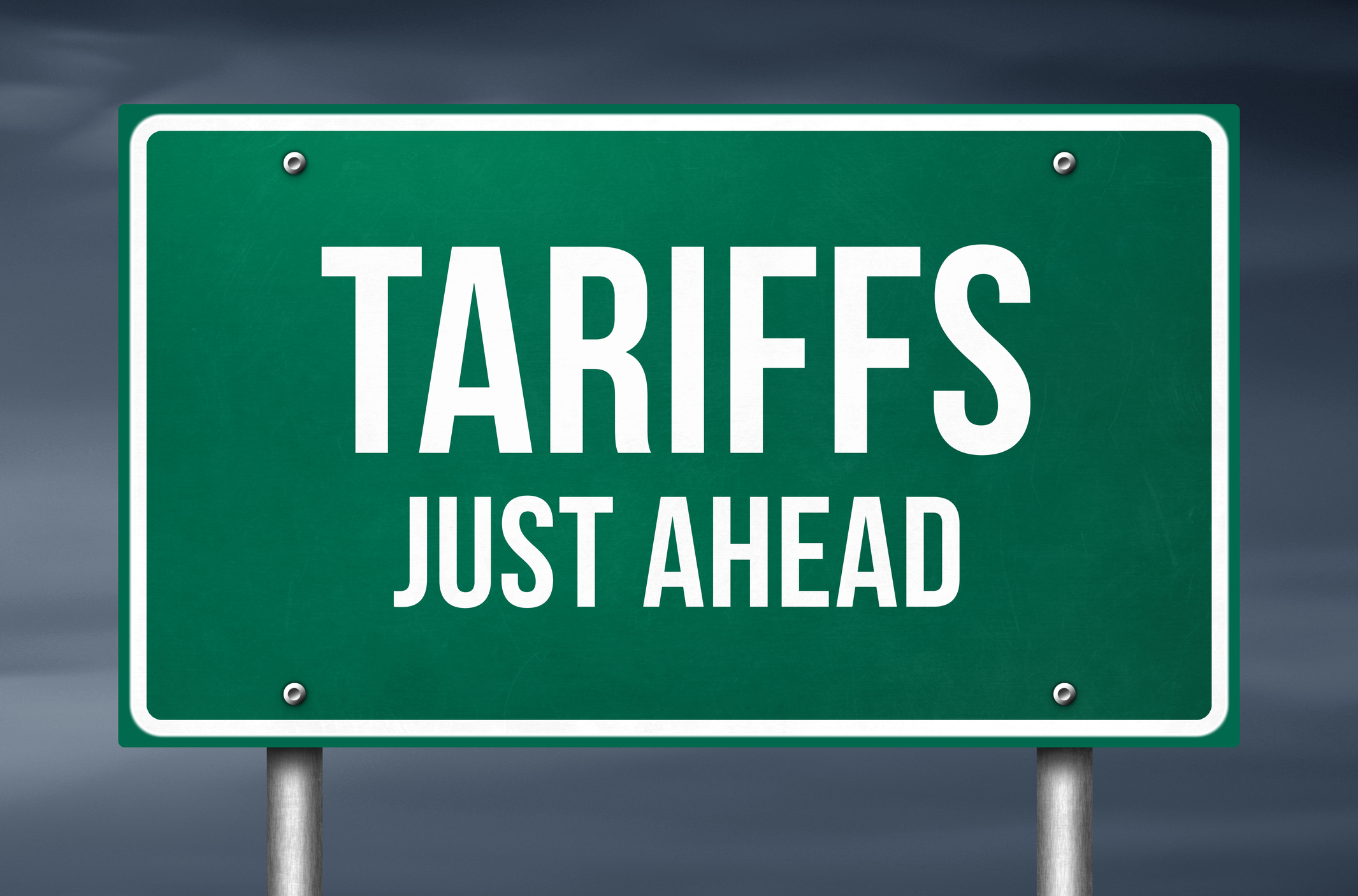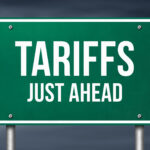Author Archives: vlm

October Market Update: No Need To Fear The Government Shutdown Boogeyman
This October, some investors are feeling spooked by the continued government shutdown that began on October 1st. But while headlines may feel like something out of a horror movie, history suggests that these budget standoffs are usually more scare than substance.
Most government shutdowns are short-lived and have minimal sustained impact on the economy or the stock market. However, with each passing day, we creep closer to the longest government shutdown on record — and that’s giving some investors a case of financial fright.
Despite the haunted headlines, many essential services will continue without interruption, including Social Security payments, Medicare and Medicaid, FAA air traffic control operations, and other vital lifelines for Americans. In other words, while the government may be in a bit of a zombie mode, it’s not completely lifeless.
Historically, investors have wisely chosen not to be haunted by shutdowns, focusing instead on the real drivers of the market: corporate earnings, consumer spending, business investment, inflation, and interest rates. That said, sectors heavily dependent on government contracts — like defense and life sciences — could experience some short-term volatility chills.
An extended government shutdown could also delay key economic data releases, such was the case for the October 3rd jobs report. That might cause a few market jitters, but in our view, it’s unlikely to deliver a true fright to economic growth. Since 1976, the U.S. has seen 20 government shutdowns, averaging just eight days in duration. The longest — a 34-day marathon in 2018–2019 — felt more like a slow-burning psychological thriller than a market catastrophe.
Even after the fog lifts and a resolution is reached, markets have tended to rebound. The S&P 500 has historically posted average gains of 1.2% and 2.9% in the one- and three-month periods following the end of a shutdown. Like a vampire at sunrise, fears tend to vanish once the light of clarity returns — though, of course, past performance is no guarantee of future results.
Still, even if investors choose to ignore the government shutdown drama, a seasonal scare might be overdue. Given the strong rally since April — and added pressures like tariffs — we see rising odds of a 5–10% pullback, which could feel like a brief Halloween jump scare rather than a true market meltdown.
That said, risk to this bull market remains low. The underlying strength of the economy, robust earnings, the anticipated resumption of the Fed’s rate-cutting cycle, and long-term catalysts like AI-driven productivity gains and fiscal stimulus from the One Big Beautiful Bill Act (OBBBA) are keeping the market’s foundation strong — like garlic against a vampire.
In short, while some near-term volatility may rattle nerves, the broader outlook remains far from frightening. Investors should stay focused on fundamentals rather than the political drama, and consider any market dips as potential treats rather than tricks.
At Victory Wealth Partners, we understand that the scariest investment strategy is having no strategy at all. As fiduciaries, we are committed to acting in your best interest — providing objective guidance tailored to your financial goals.
With markets facing seasonal volatility and headlines that may feel like a haunted house of uncertainty, now is an ideal time to review your portfolio before any major market moves occur. Whether you’re seeking clarity, confidence, or simply a second opinion, we’re here to help you navigate the fog.
🎃 We wish you a safe, successful, and festive end to October — and as always, feel free to reach out if you’d like a fresh look at your investment strategy.
 ASHLEY ROSSER, PRESIDENT
ASHLEY ROSSER, PRESIDENT
Prior to her career in the financial services industry, Ashley earned her Bachelor of Science in Nursing from Cedarville University.
Ashley decided to make a career change from her ten years within the healthcare industry as a pediatric emergency room nurse to retirement and 401K investment planning. She joined Victory Fiduciary Consulting in 2008 after obtaining her Series 65 professional financial license and went on to earn her AIF (Accredited Investment Fiduciary) professional designation from the Center for Fiduciary Studies.

September Market & Economic Recap
As summer winds down, the financial world remains focused primarily on the Federal Reserve (Fed). At last month’s Jackson Hole Economic Symposium, Fed Chair Jerome Powell signaled the Fed seems ready to cut interest rates later this month amid a slowing labor market and inflation risks poised to recede. Markets responded to the Fed’s message with a small cap-led rally and lower Treasury yields. The 10-year Treasury yield stands a good chance of staying in its current range, despite intensifying political pressure on the central bank. Containing long-term interest rates is critical as interest costs for the federal government continue to rise.
The latest inflation data for July matched expectations, but the slight increase in the year-over-year core personal consumption expenditures (PCE) deflator — the Fed’s preferred inflation metric — from 2.8% in June to 2.9% in July reminded us that there is still work to be done on inflation. Tariffs won’t make that work any easier as they flow through with a lag, their legality notwithstanding.
At the same time, the Fed and markets agree that recession risks remain low and that corporate America is in excellent health. Second quarter gross domestic product (GDP) was revised higher to 3.3% annualized, a solid jumping off point for the second half. Fiscal policy stimulus coming in 2026 will likely offset tariff hits to the economy, creating a favorable backdrop. As markets are forward-looking, this setup can help stocks hold recent gains and mitigate potential market declines in case volatility picks up.
Meanwhile, corporate earnings continue to impress. The “Magnificent Seven” tech giants delivered nearly 30% earnings growth in the second quarter and increased capital investment plans. Capital investment in artificial intelligence (AI) could approach $500 billion next year, and potentially hit $3 to $4 trillion by 2030, according to NVIDIA CEO Jensen Huang. This investment bolsters the earnings growth outlook for the tech sector and, more broadly, could bring sizable productivity gains to corporate America. Growth stocks should continue to do well.
Risks may be manageable, but we feel obligated to point out that September has historically been the worst month for the stock market. While this month could live up to its reputation as a soft patch for stocks (the average S&P 500 September price change is -0.7% since 1950), history tells us that when the broader market is trending higher into the month, seasonal weakness is less of a factor. There is also some risk that markets don’t like the forthcoming effects of tariffs, especially with stock valuations elevated.
As we navigate these crosscurrents, we encourage investors to remain diversified and continue to follow their investment strategy. Monetary and trade policy shifts, political dynamics, and corporate earnings strength present both opportunities and risks. We will continue to ensure that our portfolio positions have a dedicated role, and if that role is no longer fulfilled, we will replace them. An investment strategy must be strictly followed to work as designed. If you have questions about your current investment strategy or portfolio positions, please give us a call. We remain committed to guiding you through these complexities with as much clarity and confidence as possible.
Thank you for your continued trust.
 ASHLEY ROSSER, PRESIDENT
ASHLEY ROSSER, PRESIDENT
Prior to her career in the financial services industry, Ashley earned her Bachelor of Science in Nursing from Cedarville University.
Ashley decided to make a career change from her ten years within the healthcare industry as a pediatric emergency room nurse to retirement and 401K investment planning. She joined Victory Fiduciary Consulting in 2008 after obtaining her Series 65 professional financial license and went on to earn her AIF (Accredited Investment Fiduciary) professional designation from the Center for Fiduciary Studies.
This material is for general information only and is not intended to provide specific advice or recommendations for any individual. There is no assurance that the views or strategies discussed are suitable for all investors or will yield positive outcomes. Investing involves risks including possible loss of principal. Any economic forecasts set forth may not develop as predicted and are subject to change.
References to markets, asset classes, and sectors are generally regarding the corresponding market index. Indexes are unmanaged statistical composites and cannot be invested into directly. Index performance is not indicative of the performance of any investment and do not reflect fees, expenses, or sales charges. All performance referenced is historical and is no guarantee of future results.

Your Early August Market & Economic Recap
The last few days of July and the beginning of August have brought a flurry of key economic data, central bank activity, company earnings results, and tariff news. Here are some takeaways from the week of July 28:
Slowing U.S. economy
Second-quarter gross domestic product grew at a 3% annualized rate, though much of the growth stemmed from a sharp drop in imports after companies rushed orders ahead of tariffs. July’s jobs report showed a slowdown in hiring, signaling a labor market losing some steam. While this could support the Federal Reserve’s (Fed) case for easing, it also introduces concerns about consumer spending. Though we see no signs of an imminent recession, we believe the U.S. economy is unlikely to grow faster than 2% in the second half.
Resilient corporate earnings
Earnings season has been better than anticipated, showing that corporate America has more earnings power than previously thought. Analysts called for S&P 500 earnings per share to grow 4–5% year over year when earnings season began. We expected some upside, perhaps to around 8%, but companies are collectively on track to grow earnings by over 10% (source: FactSet). Big tech companies have been the key driver, accounting for half of earnings growth amid big investments in artificial intelligence (AI).
Stage set for a September rate cut
The Fed held rates steady on July 30, but Fed Chair Powell’s comments were less definitive than markets had hoped. The weak jobs report on August 1, however, revived expectations for a rate cut in September, which may help mitigate the magnitude of any stock market pullbacks. Two cuts of 0.25% each are likely this year, if not three, which should help support the bond market.
Don’t dismiss trade risks yet
The August 1 negotiation deadline passed, with several countries slated for tariffs well above the apparent floor at 15%. Only about half of the presumed tariffs have been implemented, meaning more upward pressure on prices and company profit margins lies ahead — after more tariffs take effect on August 7. Meanwhile, negotiations are continuing with China and several other key trading partners.
What this means for you
The market is navigating a complex landscape, with several economic and policy crosscurrents. A slowing economy, tariff implementation, and seasonal stock market weakness point to potential bouts of volatility ahead. Expected rate cuts, AI investment, and impending stimulus from tax and spending legislation passed last month may help buoy investor sentiment.
Pullbacks, when they inevitably come, can refresh bull markets and set them up for their next leg higher. So, we believe it’s important to stay invested and well-diversified, while looking for opportunities to add equities on a dip. Economic and corporate fundamentals remain in great shape.
Thank you for your continued trust.
As always, please reach out to us with any questions. We are happy to assist. As a fiduciary advisor we strive to provide clear and concise information without conflicts of interest. Enjoy these final weeks of summer!
 ASHLEY ROSSER, PRESIDENT
ASHLEY ROSSER, PRESIDENT
Prior to her career in the financial services industry, Ashley earned her Bachelor of Science in Nursing from Cedarville University.
Ashley decided to make a career change from her ten years within the healthcare industry as a pediatric emergency room nurse to retirement and 401K investment planning. She joined Victory Fiduciary Consulting in 2008 after obtaining her Series 65 professional financial license and went on to earn her AIF (Accredited Investment Fiduciary) professional designation from the Center for Fiduciary Studies.
This material is for general information only and is not intended to provide specific advice or recommendations for any individual. There is no assurance that the views or strategies discussed are suitable for all investors or will yield positive outcomes. Investing involves risks including possible loss of principal. Any economic forecasts set forth may not develop as predicted and are subject to change.
References to markets, asset classes, and sectors are generally regarding the corresponding market index. Indexes are unmanaged statistical composites and cannot be invested into directly. Index performance is not indicative of the performance of any investment and do not reflect fees, expenses, or sales charges. All performance referenced is historical and is no guarantee of future results.

Stocks are Heating Up in July
As Americans get their grills and beach chairs ready for the July 4th holiday, the stock market and the weather across much of the country have both been on continuing to heat up. Stocks and bonds continue to effectively navigate a complex policy landscape shaped by evolving trade dynamics, geopolitical tensions, and fiscal stimulus. The market’s resilience in the face of these crosscurrents has been impressive, proving yet again that the fundamentals of the U.S. economy and corporate America can withstand a lot.
In a volatile first half, the S&P 500 completed an impressive recovery from the April lows to end June at a fresh record high. The round trip from the February 19 high to the April 2 low and back, in slightly over four months, was one of the fastest recoveries on record from a 10–20% correction. Importantly, history tells us stocks tend to go higher after recovering correction losses, with average gains of 9.6% and 16.2% in the subsequent six and 12 months.
Several factors helped fuel this rally:
• Israel-Iran cease-fire and resulting lower oil prices and lower interest rates
• Progress on trade deals and, so far, little evidence of tariff-driven inflation
• Stimulus from the pending tax cuts and spending bill
• Firming expectations of Federal Reserve (Fed) rate cuts and related weakness in the U.S. dollar
• Resurgence in demand for artificial intelligence (AI) investments
• Buying by under-invested institutions trying to keep up with the rally
While history suggests achieving new highs may bode well for the rest of the year, we know stocks don’t go up in a straight line. Several obstacles lie ahead. Perhaps the biggest one is the yet-to-be-felt effects of tariffs on companies’ profit margins. With stock valuations elevated (as they’ve been for a while), earnings will be key to further upside. Potentially higher interest rates from additional deficit spending are another risk to monitor. And as always, geopolitics are a wild card.
We continue to monitor the macroeconomic backdrop, corporate fundamentals, policy developments, and technical indicators to guide our outlook. We believe the foundation for continued economic growth is intact, supported by resilient consumer spending, a healthy job market, modest earnings growth despite tariffs, the likely resumption of Fed rate cuts this fall, and the stimulus from the pending reconciliation bill. Staying invested and well-diversified while looking for opportunities to potentially add equities on weakness remains the prudent approach for this market environment.
Thank you for your continued trust. As a fiduciary we remain committed to bringing our community up to date with relevant investment and market updates without conflicts of interest. As always, we are here to help answer any questions you may have. From everyone at Victory Wealth Partners we wish you and safe and Happy Fourth of July!
 ASHLEY ROSSER, PRESIDENT
ASHLEY ROSSER, PRESIDENT
Prior to her career in the financial services industry, Ashley earned her Bachelor of Science in Nursing from Cedarville University.
Ashley decided to make a career change from her ten years within the healthcare industry as a pediatric emergency room nurse to retirement and 401K investment planning. She joined Victory Fiduciary Consulting in 2008 after obtaining her Series 65 professional financial license and went on to earn her AIF (Accredited Investment Fiduciary) professional designation from the Center for Fiduciary Studies.
This material is for general information only and is not intended to provide specific advice or recommendations for any individual. There is no assurance that the views or strategies discussed are suitable for all investors or will yield positive outcomes. Investing involves risks including possible loss of principal. Any economic forecasts set forth may not develop as predicted and are subject to change.
References to markets, asset classes, and sectors are generally regarding the corresponding market index. Indexes are unmanaged statistical composites and cannot be invested into directly. Index performance is not indicative of the performance of any investment and do not reflect fees, expenses, or sales charges. All performance referenced is historical and is no guarantee of future results.

Tariffs Bring April Showers
As you have probably seen in the news, President Trump has announced new tariffs on nearly all major trading partners. These tariffs are “reciprocal,” on top of previously announced duties, and could have possible effects on the economy and investment markets.
In light of this, I wanted to share a factual and politically neutral perspective from the lens of your financial advisor, looking at what it could mean for your financial success and our key takeaways.
Navigating Market Volatility: Staying Focused on Long-Term Success
Above all else, we remember that we should be invested according to our time horizon therefore short term market moves should not impact our investment strategy. Tariff/trade changes are an ongoing process, and it will take time to see their full effects.
Remember that investors have faced many challenges over history, including the pandemic, inflation fears, wars, recessions, bubbles, political turmoil, and technological revolutions. In every case, markets went on to new highs, even if it took some time. While the past is no guarantee of the future, it’s important to not lose sight of this fact.
Let’s Establish Some Key Facts
To help cut through the noise, below we summarize some of the biggest developments and issues from the tariff announcement:
• The immediate market reaction is negative, with the major equity indexes being under pressure this week. However, fixed income and cash are holding steady.
• The newly announced tariff measures have been set at a minimum 10% rate, and the average tariff rate across countries is 25%, with rates for some countries as high as 49%. The level and scope are greater than many investors and economists expected. Remember, the market doesn’t like surprises in the short term.
• This all comes at a time where consumer and investor sentiment is low. Concerns currently include higher inflation and a possible recession, although uncertainty remains around policy implementation timelines and economic effects of the tariffs.
• At a company level, some U.S. manufacturers might benefit from less foreign competition. Conversely, about 30% of large U.S. companies’ sales come from overseas, so changes in trade rules could impact their business. Many companies are already adjusting their operations in response.
• Given limited visibility into trade policy outcomes, the Federal Reserve has maintained interest rates, viewing tariff effects as “transitory” one-time events. If needed, the Fed has shown in the past it could step in to support markets.
Key Takeaways and the Path Forward
These tariff announcements represent a major shift in trade policy. That said, successful investing isn’t about reacting to headlines or trying to time market movements. Rather, it’s about maintaining perspective and a well-diversified portfolio aligned with your financial goals.
There are many reasons to believe markets and the economy can eventually move past the current set of concerns. It’s important to recognize that this pattern falls within normal market behavior. Historically, about two-thirds of years deliver positive returns while one-third are negative. Markets have been due for a correction for quite some time. Despite these occasional downturns, the stock market has demonstrated growth across decades and market cycles.
Furthermore, maintaining perspective and portfolio diversification remains crucial for investors. Having the fortitude and discipline to stay invested and stick to your investment strategy is a key principle to long-term financial success. We are here to help you determine appropriate strategies for your investment portfolios.
Perhaps Warren Buffett said it best in 2008, during the middle of the global financial crisis: “In the 20th century, the United States endured two world wars and other traumatic and expensive military conflicts; the Depression; a dozen or so recessions and financial panics; oil shocks; a flu epidemic; and the resignation of a disgraced president. Yet the Dow rose from 66 to 11,497.”
As always, we’re here to help you maintain perspective and make informed decisions about your financial future. Please reach out to us if you have any questions or just want to touch base. We understand this can be an unsettling time for investors and we are here to support you. Be well.
 ASHLEY ROSSER, PRESIDENT
ASHLEY ROSSER, PRESIDENT
Prior to her career in the financial services industry, Ashley earned her Bachelor of Science in Nursing from Cedarville University.
Ashley decided to make a career change from her ten years within the healthcare industry as a pediatric emergency room nurse to retirement and 401K investment planning. She joined Victory Fiduciary Consulting in 2008 after obtaining her Series 65 professional financial license and went on to earn her AIF (Accredited Investment Fiduciary) professional designation from the Center for Fiduciary Studies.
This material is for general information only and is not intended to provide specific advice or recommendations for any individual. There is no assurance that the views or strategies discussed are suitable for all investors or will yield positive outcomes. Investing involves risks including possible loss of principal. Any economic forecasts set forth may not develop as predicted and are subject to change.
References to markets, asset classes, and sectors are generally regarding the corresponding market index. Indexes are unmanaged statistical composites and cannot be invested into directly. Index performance is not indicative of the performance of any investment and do not reflect fees, expenses, or sales charges. All performance referenced is historical and is no guarantee of future results.

Navigating Market Volatility: Frequently Asked Questions
U.S. equity markets officially entered correction territory last month for the first time in 344 trading days. Tariff uncertainty feeding into economic growth concerns has been the primary catalyst behind the risk-off rotation. The 10% drop over the last month has been swift and painful, especially given that the selling pressure started from a fresh record high on February 19. However, although the economy has slowed this year as we expected, it has not stopped, and corporate America continues to deliver double-digit earnings growth. The solid fundamental footing supports our thesis that the economy is not entering a recession or a bear market. Historically tight credit spreads further support this view. Our message to investors right now is don’t panic and stay focused on the long term.
Frequently Asked Questions: Navigating Market Volatility
What is market volatility?
Market volatility refers to the degree of variation in stock prices over time. It is a natural part of investing, influenced by factors such as economic conditions, geopolitical events, corporate earnings, and investor sentiment.
Is volatility bad for my investments?
Not necessarily. While volatility can cause short term declines, it also presents opportunities for long-term investors to buy assets at lower prices. Historically, markets have recovered from downturns and continued to grow.
How often do market corrections happen?
Market corrections (declines of 10% or more) occur approximately every 1–2 years. While they can be unsettling, they are a normal part of market cycles and have historically been followed by recoveries.
Should I sell my investments when the market drops?
Selling during a downturn can lock in losses and prevent you from benefiting from market recoveries. It’s often better to stay invested and maintain a long-term perspective rather than react emotionally to short-term movements.
How can I mitigate volatility in my portfolio?
- Diversification: Spread investments across different asset classes (stocks, bonds, real estate, etc.) to potentially reduce risk.
- Rebalancing: Periodically adjust your portfolio to maintain the right mix of assets.
- Long-Term Focus: Stay committed to your financial goals rather than reacting to daily market fluctuations.
What is the impact of missing the best days in the market?
Studies show that missing just a few of the market’s best-performing days can drastically reduce long-term returns. Staying invested ensures you participate in both recoveries and long-term growth.
Are there opportunities during market downturns?
Yes! Volatility can create opportunities to:
- Buy high-quality investments at lower prices.
- Take advantage of tax-loss harvesting to offset gains.
- Rebalance portfolios to maintain strategic asset allocation
What should I do if I feel anxious about market fluctuations?
- Review Your Financial Plan: Ensure your investment strategy aligns with your long-term goals and risk tolerance.
- Talk to a Fiduciary Financial Advisor: We’re here to help you navigate uncertainty and adjust your strategy if needed.
- Stay Educated: Understanding market cycles can help reduce fear and improve decision-making.
What’s the best strategy for long-term success? Successful investors focus on:
- Staying invested through market ups and downs.
- Maintaining a diversified portfolio.
- Reassessing financial goals and risk tolerance periodically.
- Working with a trusted financial advisor to navigate uncertainty.
At Victory Wealth Partners, we understand market volatility can be unsettling, especially after two years of steady gains in stocks. Enduring the ups and downs is the price of admission for the attractive returns the stock market offers over time. It’s important to remember volatility is normal, but understanding and controlling emotions in the moment is the hard part. We are always here if you have concerns about your current investment strategy. It’s easy to overlook things when it seems like “everything is going up”. However, in a volatile market it is important to make sure your portfolio allocations all have a designated role that is based on your short-, mid-, and long-term goals. As always, we are here to help however we can. Please note Victory Wealth Partners will be moving across the street to 70 North Main Street in early May. We hope you will visit us soon in our new home! Until next month stay well.
 ASHLEY ROSSER, PRESIDENT
ASHLEY ROSSER, PRESIDENT
Prior to her career in the financial services industry, Ashley earned her Bachelor of Science in Nursing from Cedarville University.
Ashley decided to make a career change from her ten years within the healthcare industry as a pediatric emergency room nurse to retirement and 401K investment planning. She joined Victory Fiduciary Consulting in 2008 after obtaining her Series 65 professional financial license and went on to earn her AIF (Accredited Investment Fiduciary) professional designation from the Center for Fiduciary Studies.
This material is for general information only and is not intended to provide specific advice or recommendations for any individual. There is no assurance that the views or strategies discussed are suitable for all investors or will yield positive outcomes. Investing involves risks including possible loss of principal. Any economic forecasts set forth may not develop as predicted and are subject to change.
References to markets, asset classes, and sectors are generally regarding the corresponding market index. Indexes are unmanaged statistical composites and cannot be invested into directly. Index performance is not indicative of the performance of any investment and do not reflect fees, expenses, or sales charges. All performance referenced is historical and is no guarantee of future results.

February is for the Birds!
It’s February and the Philadelphia Eagles heading to the Superbowl aren’t the only newsworthy events happening so far. The new month brings two major market-moving stories for investors to digest. First is the advances in artificial intelligence (AI) by Chinese startup DeepSeek. It has caused some investors to question America’s lead in the AI race and American Exceptionalism more broadly. To answer that question, it’s important to look at this idea holistically. U.S. advantages in research and development spending, capital markets depth, the dollar’s privilege as the global reserve currency, and more suggest U.S. exceptionalism will remain intact.
Impending tariffs on our three biggest trading partners are also among the news ushered in with the new month. As you digest this news and markets react, we would like you to keep several things in mind. First, we believe the Trump administration is using tariffs mostly as a negotiation tactic with Canada and Mexico, creating leverage for working on issues like border security and drug trafficking.
Any tariffs implemented in these countries will likely not persist, especially since President Trump does not want higher inflation or sharp stock market declines. While the size and duration of tariffs remains uncertain, feedback from inflation data and market fluctuations should help mitigate potential negative impact. Lasting and higher tariffs are more likely in China, making the path forward for the Chinese economy and the China-heavy emerging market indexes potentially bumpy.
The economic impact of tariffs on consumer prices for most products will likely be manageable, as some costs are absorbed by currency fluctuations, our trading partners, and the companies themselves. Meanwhile, consumers will find substitutes for some products, lessening the blow. So, while inflation readings may tick higher in the short term and companies will experience some margin pressures, the economy should cool enough to keep Federal Reserve (Fed) rate increases off the table and bond yields in check.
As the AI and tariff headlines swirl, don’t forget that stock market fundamentals remain healthy. Steady economic growth, double-digit increases in S&P 500 profits, contained inflation, and likely additional rate cuts by the Fed later this year are a good mix for higher stock prices. The S&P 500 rose in January, which history suggests is an effective barometer for stock prices over the balance of the year. Expect a profitable year for stock investors in 2025 but be ready for some more ups and downs.
This may be a good time to look at your investment portfolio to confirm that your investment strategy remains appropriate for your needs. Remember, choosing “no strategy” is still a strategy, even if it’s not a beneficial one. Your allocations should all have a specific role to fulfill and once they are no longer doing so, it may be time to make changes. You can always consult with a fiduciary advisor to look over your current investment strategy to see if they can recommend any changes. Please call us with questions, we are always happy to help! Have a great month! Go Birds!!
 ASHLEY ROSSER, PRESIDENT
ASHLEY ROSSER, PRESIDENT
Prior to her career in the financial services industry, Ashley earned her Bachelor of Science in Nursing from Cedarville University.
Ashley decided to make a career change from her ten years within the healthcare industry as a pediatric emergency room nurse to retirement and 401K investment planning. She joined Victory Fiduciary Consulting in 2008 after obtaining her Series 65 professional financial license and went on to earn her AIF (Accredited Investment Fiduciary) professional designation from the Center for Fiduciary Studies.
Content in this material is for general information only and not intended to provide specific advice or recommendations for any individual. All performance referenced is historical and is no guarantee of future results. All indices are unmanaged and may not be invested into directly. The economic forecasts set forth in this material may not develop as predicted and there can be no guarantee that strategies promoted will be successful.

Investing in 2025: Market Factors to Consider
Looking back on 2024, it clearly echoed many of the themes from 2023. There were brief economic growth scares along the way, but the broader economy continued to defy expectations to the upside. Stocks continued their strong performance, and the S&P 500 recorded its second consecutive year of 20% plus returns. After the election, the anticipation of potentially market-friendly policies from the incoming administration also helped bolster stocks. However, the bond market experienced another lackluster year. While the Fed initiated rate cuts, it could not overcome policy ambiguity and uneasiness over rising debt levels. This led to volatility in the bond market. As we look ahead to 2025, we remain cautiously optimistic. Cautious because we know that no market environment is ever permanent. Optimistic because we recognize constructive long-term technology trends are in place. Plus, potential tax policy and deregulation efforts in 2025 could provide a tailwind — particularly from an economic perspective.
As we enter 2025, the economic landscape remains complex, marked by both opportunities and potential risks. In the year ahead, investors should be thinking about the following:
Look for the economy to slow but not tip into recession:
The economy will likely downshift throughout 2025 as consumer spending begins to moderate from recent speeds. Pent-up demand for business capital expenditures, favorable tax policy, and likely deregulation are expected to be positive catalysts that should help offset some consumer softening.
Be prepared for inflation hiccups and changing narratives around rates:
Some inflationary pressures may re-emerge in 2025 as new policies are introduced. However overall inflation is expected to remain subdued. Upticks in inflation could lead to a slower pace of Federal Reserve (Fed) rate cuts than expected that force markets to adjust to yields staying higher for longer.
Remember that so goes employment, so will go the economy:
The labor market continues to show signs that it is slowly shifting. Workers are becoming less inclined to switch jobs and the average workweek for private payrolls has declined, which is indicative of a weakening demand for labor. We expect the unemployment rate will continue to move up moderately in the coming quarters. Anything more than gradual would be a clear sign that our base case is wrong, and the economy is entering a more pronounced slowdown.
It was another impressive year for stocks. The market was driven higher by unwavering trends in technology, an enduring economy with lowering inflation, interest rate cuts, and the hope of investor-friendly new administration. As we look towards 2025, investors should consider:
Varied upside potential:
If they persist, a combination of moderating inflation, stable interest rates, and strong earnings growth supports a higher S&P 500 valuation. Our fair value target range for 2025 is 6,275 to 6,375. Potential upside could come from lower rates, productivity gains, and confirmation of market friendly policies from the new administration.
Avoiding recession is key:
The stock market has historically delivered single digit returns in the 12 months following an initial rate cut from the Fed, but when recession has been avoided, the median gain has been closer to 11%.
Potential risks:
While not the base case, a much slower-than-expected economy, coupled with a volatile interest rate policy, would be a serious headwind. Additionally, resurgent inflationary pressures in response to new policy or another increase in geopolitical tensions could also further undermine the current positive narrative for stocks.
Don’t expect a one-way street higher:
We should expect equity markets to undergo 10% corrections throughout the year. Be prepared for bouts of volatility in 2025 and consider buying equities on market pullbacks. We expect equity returns to still be favorable in 2025, but the upside will not be as robust as 2024.
At Victory we remain excited about the opportunities 2025 will offer. If you have questions about any of the topics we discussed above, please give us a call. We are always happy to help. Wishing you a safe and productive first month of the year. Be Well!
 ASHLEY ROSSER, PRESIDENT
ASHLEY ROSSER, PRESIDENT
Prior to her career in the financial services industry, Ashley earned her Bachelor of Science in Nursing from Cedarville University.
Ashley decided to make a career change from her ten years within the healthcare industry as a pediatric emergency room nurse to retirement and 401K investment planning. She joined Victory Fiduciary Consulting in 2008 after obtaining her Series 65 professional financial license and went on to earn her AIF (Accredited Investment Fiduciary) professional designation from the Center for Fiduciary Studies.
Content in this material is for general information only and not intended to provide specific advice or recommendations for any individual. All performance referenced is historical and is no guarantee of future results. All indices are unmanaged and may not be invested into directly. The economic forecasts set forth in this material may not develop as predicted and there can be no guarantee that strategies promoted will be successful.

Year-End Financial Checklist: What Every Investor Should Consider
Do you have a Year-End Financial Checklist? As the year winds down and the holiday season kicks into full swing, it’s the perfect time for investors to reflect on their financial strategies and ensure they’re on track for the year ahead. While festivities take center stage, don’t let your investment planning fall by the wayside. The end of the year offers an opportunity to adjust investments, finalize tax strategies, and set yourself up for future financial success. Here’s a short Year-End Financial Checklist of what investors should consider before the new year.
1. Review Your Investment Portfolio
The end of the year is an ideal time to take a step back and review your investment portfolio. Have your assets been performing as expected? Are they aligned with your long-term financial goals and risk tolerance? Over the course of the year, market conditions can shift, and your portfolio may need rebalancing to stay on track.
For instance, if certain sectors or assets have outperformed, they may now make up a larger portion of your portfolio than intended, introducing more risk than you’re comfortable with. On the flip side, underperforming assets might need to be addressed to prevent them from dragging down your overall returns. A well-balanced portfolio can help you manage risk and improve long-term performance.
2. Take Advantage of Tax Loss Harvesting
Tax loss harvesting is a strategy where investors sell underperforming investments to offset taxable gains elsewhere in their portfolio. If you’ve experienced losses in certain assets this year, consider selling them before December 31st to reduce your overall tax burden. These losses can help offset gains from other investments, potentially lowering your tax liability for the year.
If your losses exceed your gains, you can use up to $3,000 to offset ordinary income. Any remaining losses can be carried forward to future years, providing potential tax benefits down the road. Just remember, to avoid the IRS’s “wash-sale” rule, you can’t repurchase the same or substantially identical security within 30 days of the sale.
3. Take Your Required Minimum Distributions (RMDs)
If you are age 73 or older, you are required to take minimum distributions from your tax-deferred retirement accounts like a traditional IRA. These Required Minimum Distributions (RMDs) must be withdrawn by December 31st each year. Failure to take your RMD can result in hefty penalties—up to 50% of the amount you were supposed to withdraw.
If you have a charitable inclination, consider using your RMD to make a Qualified Charitable Distribution (QCD). If you are 70½ or older, you can donate up to $100,000 from your IRA directly to a qualified charity, which won’t count as taxable income. This can be a tax-efficient way to meet your RMD requirement while giving back during the holiday season.
4. Contribute to Retirement Accounts
Before the end of the year, it’s also worth considering making contributions to retirement accounts. If you’re eligible, contribute the maximum to your IRA or 401(k) to take advantage of tax-deferred growth. Traditional IRA and 401(k) contributions can reduce your taxable income for the year, providing an immediate tax break.
If you’ve already maxed out contributions to tax-deferred accounts, you may want to consider funding a Roth IRA (if eligible) for future tax-free withdrawals. With a Roth IRA, your contributions grow tax-free, and qualified withdrawals in retirement are also tax-free.
5. Set Financial Goals for the New Year
The end of the year is a natural time for reflection and goal setting. Take some time to evaluate your financial goals for the upcoming year. Are you on track with your retirement savings? Do you have any new financial goals—like purchasing a home, starting a business, or funding education? Consider creating a roadmap for success by using our Year-End Financial Checklist. Whether it’s contributing more to your retirement account, building an emergency fund, or expanding your investment portfolio, having clear objectives will help guide your investment strategy in the year ahead.
I know this is a busy time of year for us all, but spending some time to plan out your financial future can help you achieve your goals for 2025 and beyond. So, before you get lost in the holiday hustle, take a moment to reflect on your investments and financial goals—you’ll be glad you did when the new year arrives. We are here if you have any questions and as always, we are happy to help. Happy holidays and happy investing!
 ASHLEY ROSSER, PRESIDENT
ASHLEY ROSSER, PRESIDENT
Prior to her career in the financial services industry, Ashley earned her Bachelor of Science in Nursing from Cedarville University.
Ashley decided to make a career change from her ten years within the healthcare industry as a pediatric emergency room nurse to retirement and 401K investment planning. She joined Victory Fiduciary Consulting in 2008 after obtaining her Series 65 professional financial license and went on to earn her AIF (Accredited Investment Fiduciary) professional designation from the Center for Fiduciary Studies.

November Market Update: Election Results Affect The Markets
Yesterday, Donald Trump was elected the 47th president of the United States, defeating Vice President Kamala Harris thanks to strong performance in key swing states that gave him 277 electoral votes to 224 for Harris (according to The Associated Press, while five states have yet to be called).
The gains at the top of the Republican ticket filtered down to state-level races, where Republicans achieved a majority in the Senate by flipping three seats to take a 52-seat majority, with several tight races still yet to be called. House control is still up in the air, but Republicans appear headed for a razor-thin majority and a GOP sweep.
For investors, achieving an outcome and removing the cloud of uncertainty is, in and of itself, a positive development. If the economy is on solid footing, as it is currently, stocks have historically reacted positively to election results regardless of outcome. We expect this time to be no different. Historically, the S&P 500 has generated an average gain of 6.5% in the year following Election Day.
Those concerned about post-election volatility can also take comfort in the fact that the best six-month period for stocks has begun. From November through April, the S&P 500 has historically generated an average gain of 7.2%. Even in post-election years, returns during these six months have been above average at 5.3%. With the economy and profits growing, inflation easing, and more Federal Reserve rate cuts coming, potential volatility around the transition of power could present a buying opportunity.
In terms of policy implications, the tax cuts enacted by then-President Trump in the Tax Cuts and Jobs Act of 2017 will expire at the end of 2025. Trump has stated he plans to extend them, though some revenue offsets, including tariff increases, are likely to limit the additional deficit spending. His America-first agenda could cause volatility in international markets, notably China, put some upward pressure on domestic prices through tariffs, and help the more domestic-focused small cap stocks (which are surging this morning). Finally, deregulation efforts may support certain segments of the energy and healthcare sectors as well as financial services and cryptocurrencies.
As we begin to put an emotional election behind us, the start of President Trump’s second term will be met with a healthy economy supporting strong corporate profit growth. The clarity of an election outcome and favorable seasonality will likely help support stocks in the near term, even after the initial bump, as the transition of power takes place. The political divisiveness won’t necessarily go away now that the election is over, but let’s hope we can make more progress bridging our divides. As always, if you have any questions about your current financial picture or how the election results could impact your portfolios please give us a call. We are always happy to help.
 ASHLEY ROSSER, PRESIDENT
ASHLEY ROSSER, PRESIDENT
Prior to her career in the financial services industry, Ashley earned her Bachelor of Science in Nursing from Cedarville University.
Ashley decided to make a career change from her ten years within the healthcare industry as a pediatric emergency room nurse to retirement and 401K investment planning. She joined Victory Fiduciary Consulting in 2008 after obtaining her Series 65 professional financial license and went on to earn her AIF (Accredited Investment Fiduciary) professional designation from the Center for Fiduciary Studies.












